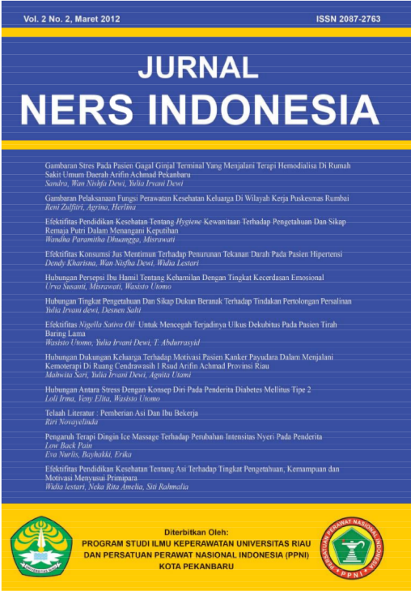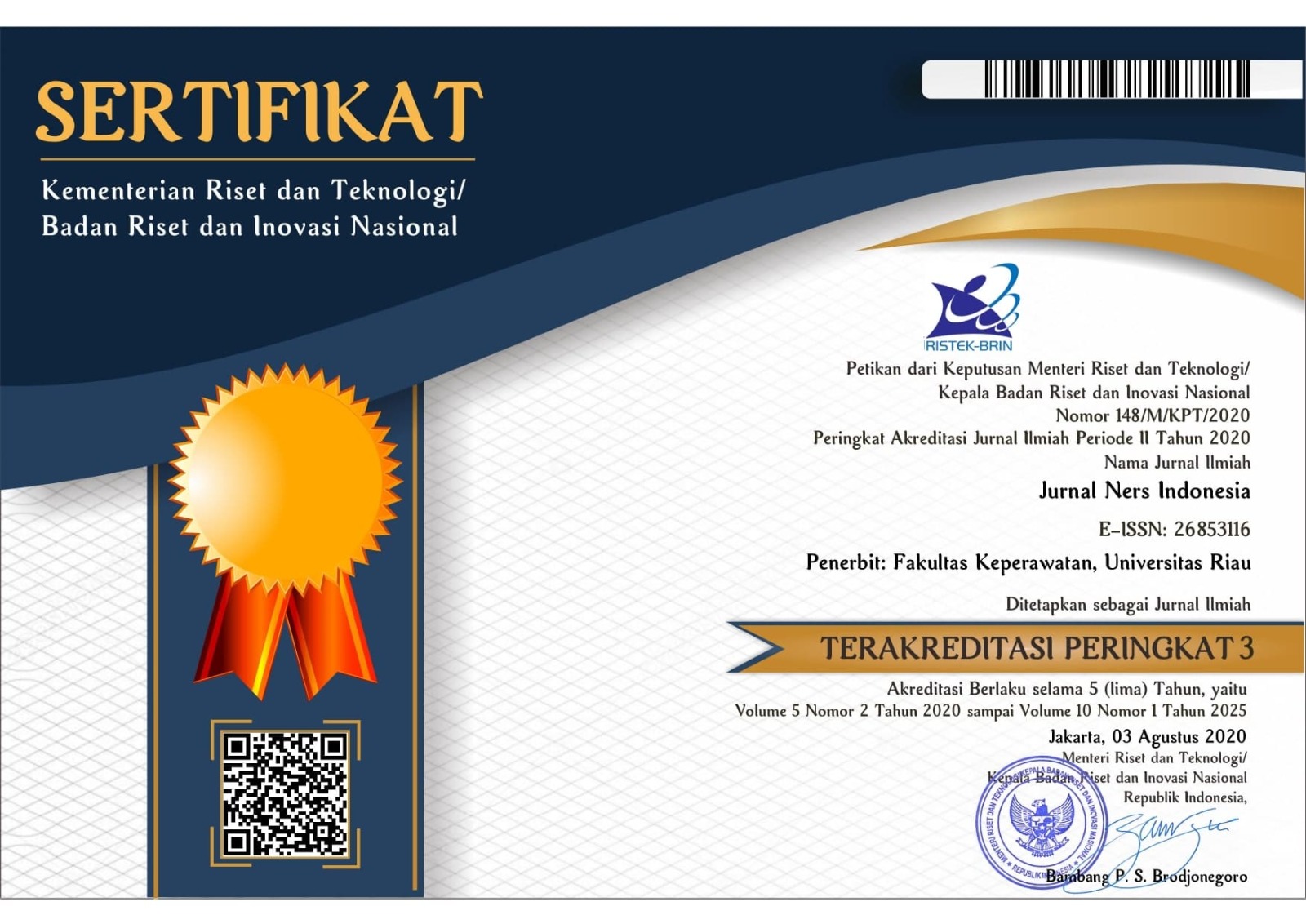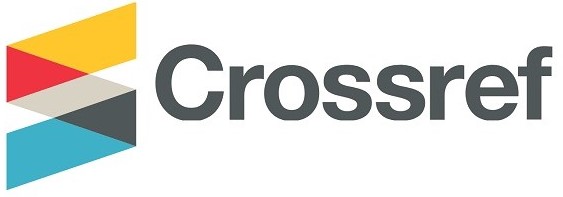Gambaran Stres Pada Pasien Gagal Ginjal Terminal Jurnal NERS Indonesia, VOL. 2, NO. Yang 2, Maret 2012 Menjalani Terapi Hemodialisa Di Rumah Sakit Umum Daerah Arifin Achmad Pekanbaru
DOI:
https://doi.org/10.31258/jni.2.2.99-108Abstract
Stress is an emotional and behavioral disorder that occurs due to an imbalance of self adjustment between life changes experiencedwith the ability of its resources. Lifelong therapy gives a change in the patient’s life like physical, cognitive, psychological,social and spiritual.This study aimed to identify the level of stress in patients with hemodialysis treatment of end-stage renaldisease, given the differences in each individual in response to the changes experienced are different from each other dependingon the patient’s ability to adjust to such changes. The study design used is descriptive. The research sample was taken by meansof random sampling in patients undergoing hemodialysis therapy as many as 36 people. The stress levels is measured usingquestionnaires covered and univariat analysis in the form of a frequency distribution. The results of the research shows thatstress patients a mild level is 2 people (6%), moderate levels were 21 people (58%), and severe stress levels as much as 13people (36%).This study suggested that hemodialysis nurses need for to know the stress level in patients with hemodialysistreatment of end-stage renal disease so it can be more empathetic to what is experienced by the patient and not just run theroutine care and maintenance tool only. On the other researchers can use as the basis of further research.
Keywords: end-stage renal disease, Haemodialysis, Stress












